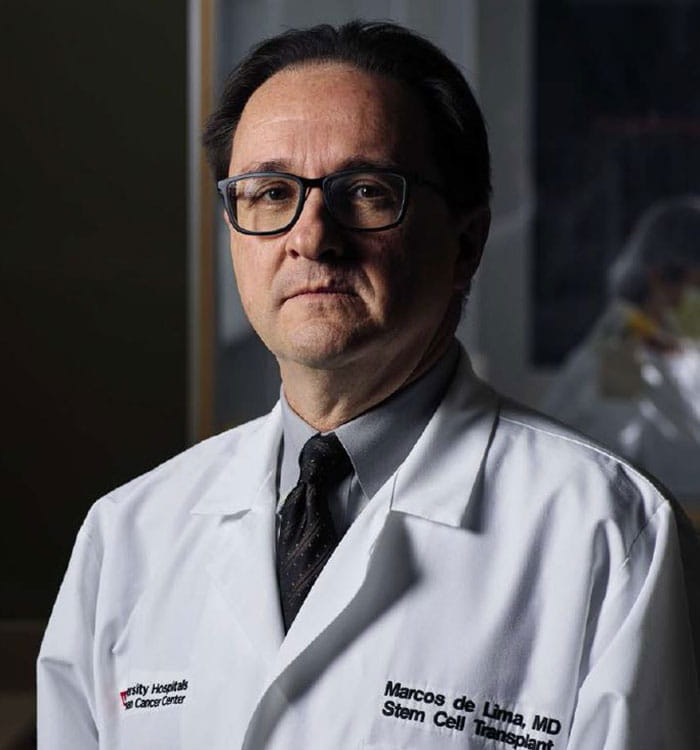A Paradigm Shift for Improving Hematologic Malignancy Outcomes in Adults
January 01, 2016
Oncology - January 2016
 Marcos de Lima, MD
Marcos de Lima, MDStem Cell Transplant Director Marcos de Lima, MD, new to UH Seidman Cancer Center from M.D. Anderson Cancer Center, has shown that injecting combined human cord blood cells and mesenchymal stromal cells (MSCs) directly into bone marrow results in better engraftment in mice. He and his team are now testing the approach in adult patients with hematologic malignancies.
“This project addresses one of our top challenges – a lack of matched donor cells,” Dr. de Lima, Director, Hematologic Malignancies and Stem Cell Transplant Program, UH Seidman Cancer Center at Case Medical Center and Professor of Medicine, Case Western Reserve University School of Medicine says. “Because of greater tolerance to donor-recipient HLA mismatches, umbilical cord blood increases the availability of allogeneic donors for minority patients in need of this form of treatment.”
Cord blood transplants are associated with lower rates of graft vs. host disease (GVHD), therefore allowing more HLA mismatches than would otherwise be tolerated in bone marrow or peripheral blood transplants. “As a result, the donor pool is increased significantly, and most patients in need may find donors,” Dr. de Lima says.
Cord blood, however, also has its issues. “Success of cord blood transplantation is limited by the relative low cell doses, delayed engraftment and associated complications,” Dr. de Lima says.
To address these challenges, Dr. de Lima is embarking on a pilot project combining donor cord blood cells with mesenchymal stromal cells (MSCs) harvested from a volunteer unrelated to the donor or recipient. To avoid the problem of cells that get ‘lost’ in the bloodstream, he and his team are injecting these cells directly into patients’ bone marrow. The MSCs are injected into the bone marrow immediately before the cord blood.
“We’ve seen that if we combine human cord blood cells with MSCs from an unrelated human and inject the combined cells into a recipient mouse’s leg bone, we see better engraftment with more donor cells remaining in the marrow,” Dr. de Lima says.
A trial with 10 to 12 patients, using this approach, is now under way at UH Seidman Cancer Center, with the first patient receiving treatment in late 2015.
“Ultimately, if it does succeed, it could challenge the standard of care, which is currently to do a double cord blood transplant,” Dr. de Lima says. “What we’re proposing is a complete shift. If successful, this new approach could shorten engraftment time and potentially decrease treatment-related mortality, while expanding the use of cord blood from the large, already-procured national inventory. If co-transplantation of cord blood cells and MSCs leads to better outcomes, this approach would have a significant impact in the field. To our knowledge, this is the first study of its kind.”
For more information about this investigator-initiated trial available at UH Seidman Cancer Center, email Marcos.deLima@UHhospitals.org.
Tags:


